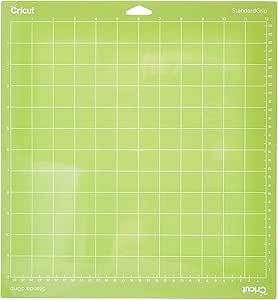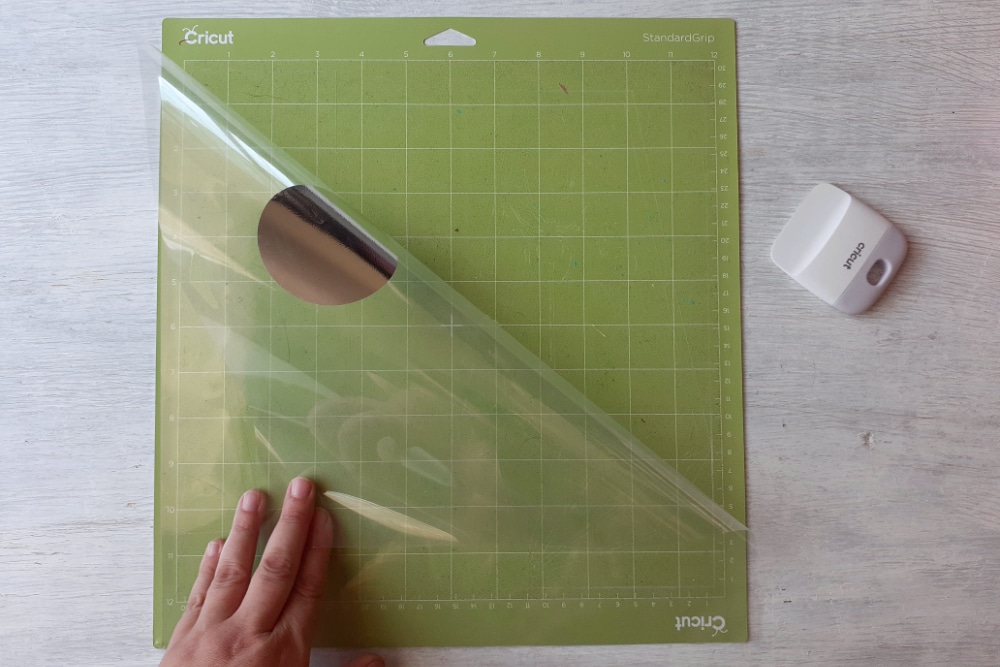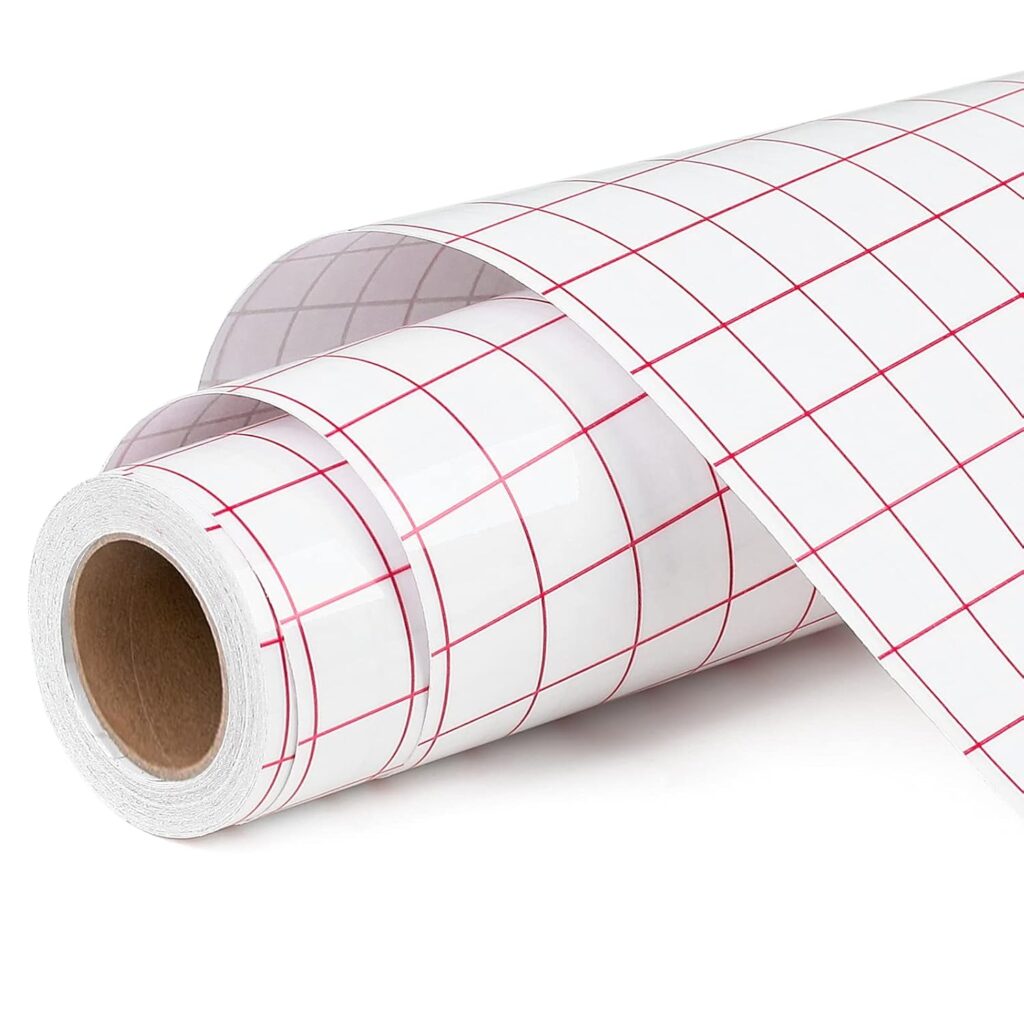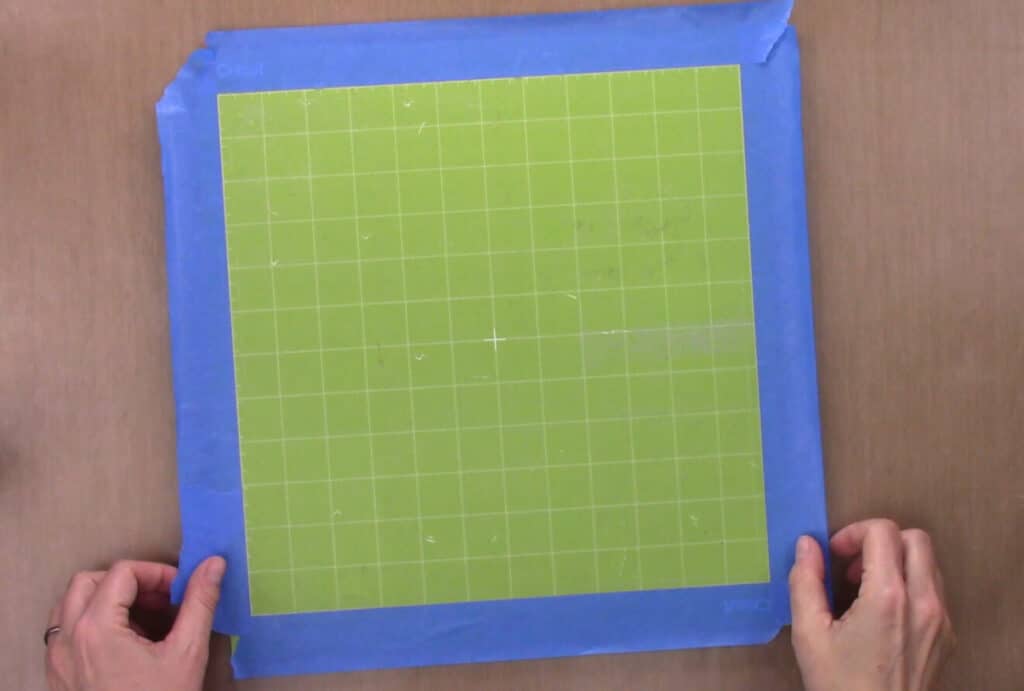
To prevent harm to your Cricut Mat, take some basic precautions. Initially, always utilize a protective plastic sheet while cutting. Clean your mat regularly to eliminate debris and adhesive residue. Avoid exposing your mat to heat, which can distort it. When working with fabric mats, use transfer tape to lessen wear. Store your mats flat and tape off the edges if you’re reattaching. Lastly, inspect your mats often and replace them when needed. Following these tips keeps your mats in good condition and enriches your crafting experience. You can explore supplementary tactics to prolong their lifespan next!
Use the Protective Plastic Sheet
Using a safeguarding plastic film can help you dodge mat damage when working with your Cricut. This simple measure serves as a barrier between your materials and the cutting mat, reducing wear and tear. When you place it over your mat before starting a project, you create a smooth surface that minimizes scratches and debris accumulation.
It’s crucial to choose a high-quality plastic film that’s flexible yet durable. Look for options that can withstand repeated use without tearing or losing their shape. When you cut your materials, the film will absorb some of the pressure, which can also lead to cleaner cuts.

Moreover, using a safeguarding film can keep your mat cleaner for longer. It helps prevent adhesive buildup from excess material and makes it easier to remove any leftover pieces after cutting. This means you won’t have to replace your mat as frequently, saving you time and money in the long run.
Remember to lay the film flat and secure it well to avoid any shifting during the cutting process. If you notice any wrinkles or bubbles, smooth them out to guarantee an even cutting surface.
Clean Regularly
To maintain the longevity of your Cricut mat, cleaning it regularly is key to preventing damage and ensuring peak performance. Over time, dust, debris, and leftover materials can accumulate on the mat’s surface. If you neglect to clean it, these particles can impact the adhesion and cutting quality, leading to frustrating crafting experiences.
Start by using a gentle adhesive remover or a lint roller. A lint roller is ideal for picking up loose fibers and small debris without harming the mat’s surface. Simply roll it over the mat to lift away any particles. If you’re dealing with sticky residue, apply a small amount of adhesive remover to a soft cloth and carefully wipe it away. Be cautious not to saturate the mat; a little goes a long way.

For deeper cleans, consider using warm soapy water. Lightly dampen a cloth with the mixture and wipe the mat, ensuring you don’t soak it. After that, rinse the cloth and wipe the mat again to remove any soap residue. Let the mat air dry completely before using it again.
Make it a habit to clean your mat after every few projects or whenever you notice a buildup of debris. Regular maintenance not only prolongs the life of your mat but also boosts your crafting efficiency. By keeping your mat clean, you’ll enjoy better results and fewer frustrations with your Cricut projects.
Avoid Heat
Heat can harm your Cricut mat, so it’s important to keep it away from hot surfaces or direct sunlight. When you expose your mat to high temperatures, it can warp, lose its stickiness, or even crack. This can impact the quality of your cuts and ultimately spoil your projects.
To safeguard your mat, always store it in a cool, dry place. Avoid leaving it near heat sources, such as radiators, ovens, or even under direct sunlight from a window. If you’re working in a well-lit area, try to position your work surface so that it’s not directly in the sun’s path.
When you finish using your mat, store it flat or in its original protective sheet to avoid bending or warping. If you need to transport your mat, consider using a protective case that shields it from temperature fluctuations.
If you’re working with a heat press or other crafting tools that generate heat, try to keep your mat at a safe distance. Even brief exposure to high temperatures can lead to damage, so being proactive is important.
Remember that maintaining your Cricut mat’s integrity is vital for achieving the best results in your projects. By avoiding heat, you’ll extend the life of your mat and guarantee consistent performance every time you craft. Taking these simple precautions can make a significant difference in the longevity of your Cricut mat.
Use Transfer Tape for Fabric Mats
Transfer tape can be a game changer when working with fabric mats, helping you achieve clean, precise transfers without damaging your materials. By using transfer tape, you can lift your designs from the mat and apply them to your project with ease. This method not only safeguards your fabric mats from wear and tear but also minimizes the risk of ripping or stretching delicate fabrics.
To use transfer tape effectively, start by cutting a piece that’s slightly larger than your design. Once you weed out the excess material, place the transfer tape over your design, making sure it covers all parts evenly. Use a scraper tool to press down firmly, eliminating any bubbles and ensuring a solid bond. This step is pivotal because it guarantees your design lifts cleanly from the mat.

When you’re ready to transfer, peel the tape slowly away from the mat. The design should stick to the tape rather than the mat, preventing any potential damage. Align your project where you want it, and press down firmly. After securing your design, you can slowly peel away the transfer tape, leaving your design perfectly placed.
Using transfer tape not only improves your project’s overall quality but also extends the life of your fabric mats. So, next time you’re crafting with your Cricut, don’t forget to reach for that transfer tape. It’s a simple tool that can make a significant difference in your crafting adventure.
Store Properly
Proper storage of your Cricut mats can greatly extend their lifespan and maintain their performance. When you’re not using your mats, it’s vital to keep them in a safe and clean environment. Start by placing them back in their original protective sheets. This helps prevent dust, debris, and scratches that can impair their stickiness and fundamental functionality.
Avoid stacking heavy items on top of your mats. Pressure can warp them, making it difficult for your Cricut to cut accurately. Instead, store them flat whenever possible. If space is tight, consider investing in a vertical organizer or a dedicated storage box designed specifically for Cricut mats. Keeping them upright minimizes the risk of bending or creasing.
Temperature and humidity also play a significant role in your mats’ longevity. Store them in a climate-controlled space, away from direct sunlight or extreme heat, as these can degrade the adhesive over time. A cool, dry place is ideal.
Tape Off Edges When Resticking
To maintain your Cricut mats in top condition, taping off the edges while resticking them can safeguard adhesive from seeping onto the cutting area. This simple step can save you time and frustration down the line.
When you apply adhesive directly to your mat, it’s easy for the glue to spread into areas where you don’t want it. By using tape, you create a barrier that helps preserve the integrity of your cutting surface.

Before you start, gather some painter’s tape or any low-tack tape that won’t harm your mat. Lay the tape along the edges, ensuring it covers all areas where you don’t want adhesive. This will allow you to apply the new adhesive without worrying about overspray or excess glue compromising the precision of your cuts.
Once you’ve taped off the edges, go ahead and apply your resticking solution. Whether you’re using a spray adhesive or a liquid, be mindful of the amount you’re applying. Too much adhesive can lead to a sticky mess, while too little mightn’t provide the grip your materials need.
After applying the adhesive, remove the tape carefully before it dries. This will guarantee that you’ve got clean edges and a perfectly prepped mat.
Replace When Necessary
Knowing when to swap your Cricut mat is essential for achieving the best results in your projects. Over time, mats lose their stickiness and can become damaged, which can lead to poor cuts and frustrating crafting experiences. Keep an eye on the condition of your mat, and don’t hesitate to swap it when necessary.
One clear sign that it’s time for a new mat is when you notice the adhesive no longer holds your material securely. If your project shifts while cutting, it can ruin your design and waste materials. If you see significant wear, like scratches or tears, these imperfections can interfere with the cutting process. Always inspect your mat regularly, especially after multiple uses.
Another factor to take into account is how often you use your Cricut. If you craft frequently, you might need to swap your mat more often than someone who uses it occasionally. For heavy-duty projects or thicker materials, you may find that your mat wears out faster.
When you do decide to swap your mat, choose one that suits your specific crafting needs. Cricut offers different mats with varying levels of stickiness for different materials, so make sure to select the right one for your projects.
Final Thoughts
By following these simple tips, you can keep your Cricut mats in great shape and extend their life.
Use the protective plastic sheet, clean them regularly, and avoid heat to prevent damage.
Don’t forget to use transfer tape for fabric mats and store them properly.
Taping off the edges when resticking will also help, and remember to replace them when they wear out.
By being proactive, you’ll enjoy crafting with your Cricut without worrying about mat damage.




